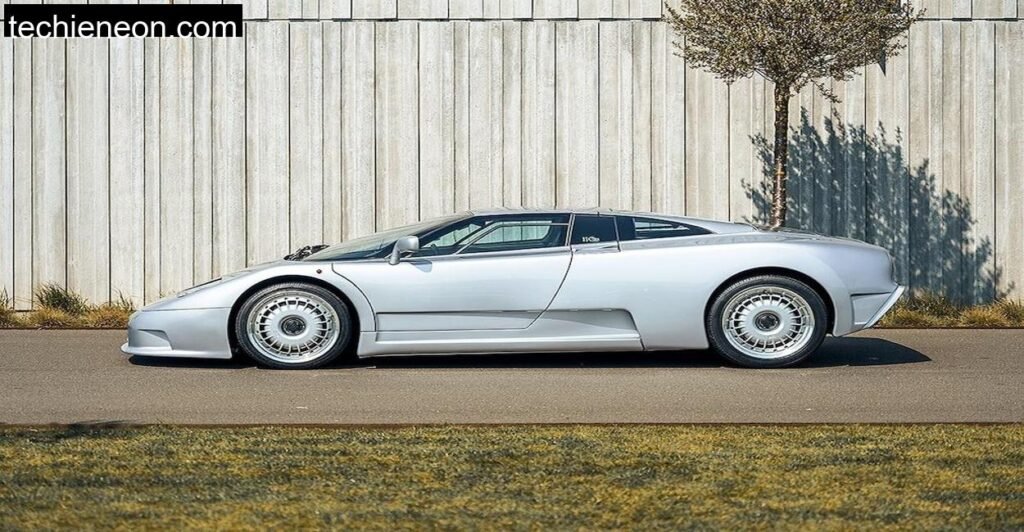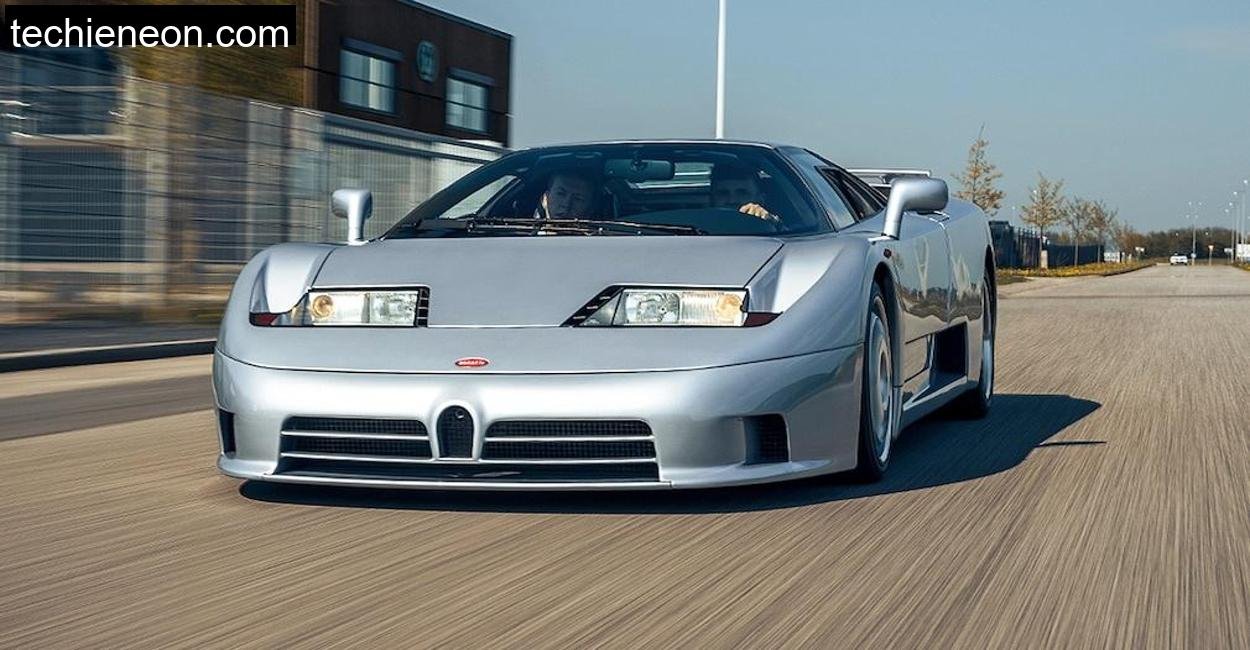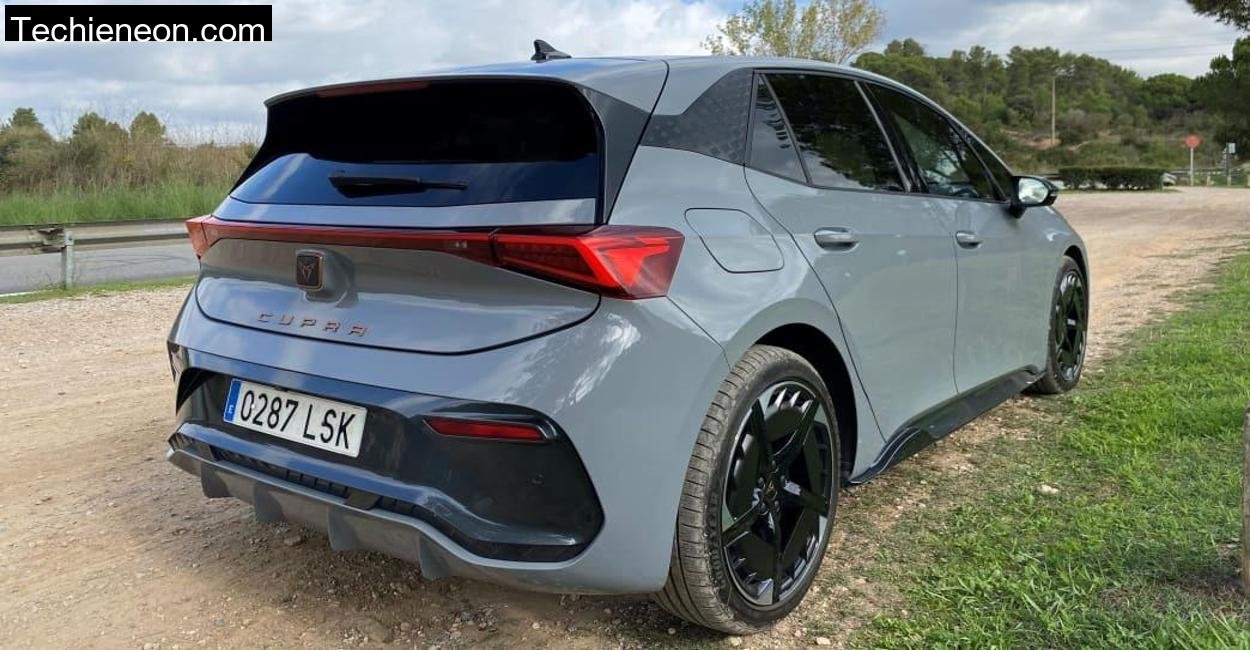The Forgotten Supercar That Pushed the Future Forward
Most people, when they hear the name Bugatti, think of the Veyron or the Chiron, those W16-powered rocketships drenched in luxury and digital wizardry. But decades before those cars, there was the EB 110. Born out of one man’s obsession, Romano Artioli, and forged in the heart of Italy, the EB 110 was meant to be the world’s most technologically advanced supercar when it debuted in 1991.
It had everything: carbon fiber monocoque, all-wheel drive, active aerodynamics, and a quad-turbocharged V12. In fact, many features people associate with “modern Bugatti” were pioneered right here. Sadly, bad timing and worse finances sank the company just a few years later. Only 128 cars were ever built. And yet, here I was, sitting in one of them, idling in the peaceful stillness of the Drawehn forest, holding a key that folds out of a blue leather diamond.
Let’s see what makes this technical marvel tick.
| pecification | Detail |
| Engine | 3.5L V12, quad-turbocharged |
| Power Output | 560 hp @ 8000 rpm |
| Torque | 611 Nm @ 4200 rpm |
| Drivetrain | All-wheel drive (27% front / 73% rear bias) |
| Transmission | 6-speed manual |
| 0-100 km/h | 3.5 seconds |
| Top Speed | 342 km/h |
| Weight | Approx. 1620 kg |
| Chassis | Carbon fiber monocoque (125 kg) |
| Production Years | 1991–1995 |
| Units Produced | 128 (EB 110 GT) |
| Wheels | 18-inch BBS magnesium |
A Wedge of Wonder on Drawehn’s Roads
I’ll admit, I was nervous when Nikolaj from SCI handed me the keys. The Bugatti wasn’t just rare, it was priceless. But more than that, it felt like stepping into a myth. Opening the scissor door (Bugatti’s only model ever with this design) was its own ritual. The handle was almost hidden near the intake, a detail lost on most photos but very real when you’re standing next to the car.
Sliding inside felt like entering a cocoon. Dark blue Poltrona Frau leather wrapped every surface. It wasn’t stripped out like a Ferrari F40 or F50; this cabin was about craftsmanship. The dashboard smelled like an antique cigar box, full of history and quiet authority. In front of me sat a 400 km/h speedometer and a tachometer that dared you to rev to 10,000 rpm. Even stationary, the EB 110 was audacious.
I thumbed the immobilizer’s transponder. Lights flicked. Then I turned the key.
The V12 fired, not with a bang, but with a soft, dense growl. No digital screens. No flashy theatrics. Just mechanical heartbeat and analog readiness.
And then we rolled out onto Drawehn’s roads.
Gentleman’s Fury: The EB 110’s Real Driving Character
Driving the EB 110 was like meeting a heavyweight boxer who moves like a ballet dancer. In my mind, I had expected something brutal. Four turbos? All-wheel drive from the early ’90s? A carbon monocoque mated to magnesium wheels? Surely it would be intimidating.
It wasn’t.
The clutch was surprisingly forgiving, and first gear engaged without a fight. The gearstick felt long-throw and mechanical, each shift needing intention. But what shocked me most was the throttle response. There was none of the lag I braced for. Instead, the power came on smoothly, progressively. Unlike the Veyron’s dramatic surge after a slight pause, the EB 110 just built force naturally, as if pulled by magnets. At 3000 rpm, you feel it breathe. By 5000, you’re flying. At 8000 rpm, the scenery blurs, but not your senses. It’s eerily composed. The turbos don’t scream. Instead, the engine hisses and hums, punctuated by the chirp of wastegates when you lift off.
Through the Drawehn’s curving roads, it felt planted yet pliable. The steering, unassisted and honest, delivered every crack and camber to my hands. All-wheel drive offered grip without drama, and the weight distribution, so carefully engineered, made corner exits feel confident but not sterile. I wasn’t pushing for top speed. I didn’t need to. Even at 140–160 km/h, the car gave everything: feedback, emotion, precision. It made other supercars from its era feel like agricultural equipment. And still, it was never raw. This wasn’t a car trying to scare you. It was a car trying to seduce you.
The Science Behind the Soul

What makes the EB 110 feel so “different” from expectations comes down to the engineering depth. The engine is a 3.5-liter V12, yes, small by modern hypercar standards, but it packs five valves per cylinder and dry-sump lubrication with 15 liters of oil. It revs like a race engine but behaves like a touring one.
The carbon monocoque, built by aerospace giant Aérospatiale, was a moonshot at the time. It kept the chassis rigid and light, while the titanium fasteners and magnesium wheels shaved weight and added exotic appeal.
Even the active rear wing, which deploys when you turn the ignition, hinted at an understanding of aerodynamics that was decades ahead. And all of this came in a car built before traction control became common. No electronic nannies, just mechanics, geometry, and grip.
An Unexpected Grace in a Forgotten Legend
As I pulled back into the rest area just outside Lüchow, surrounded by golden fields and silent forest, I didn’t feel like I had tamed a beast. I felt like I had shared a secret. The EB 110 isn’t a supercar that fights you. It’s one that works with you. For a machine once meant to be the world’s fastest, it’s surprisingly happy at 80 km/h, burbling gently through quiet villages.
That’s its genius. It can do 342 km/h. But it doesn’t need to in order to make your heart race.
Conclusion: The True Legacy of the EB 110
The Bugatti EB 110 GT was ahead of its time in nearly every conceivable way. It wasn’t just about numbers. It was about harmony, between power and poise, technology and tactility. Driving it through the German Drawehn, I didn’t find the angry monster I was prepared for. I found something better.
I found a car that proves greatness doesn’t always need to shout. Sometimes, it simply hums, quietly reminding you what’s possible when engineering dreams big, and when passion doesn’t compromise.



Leave a Comment